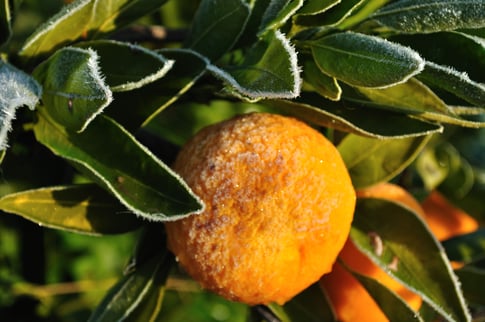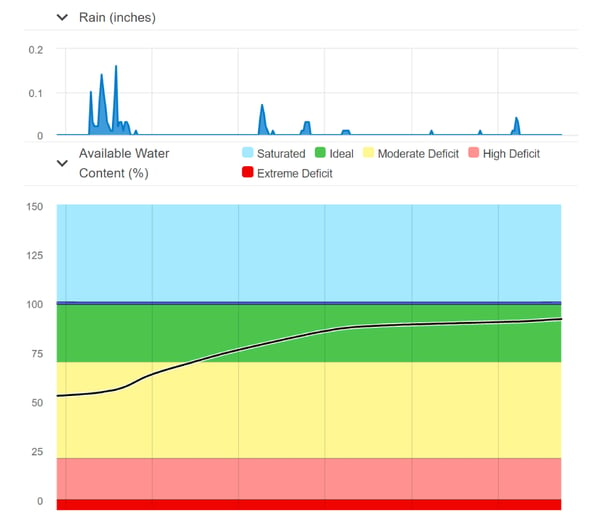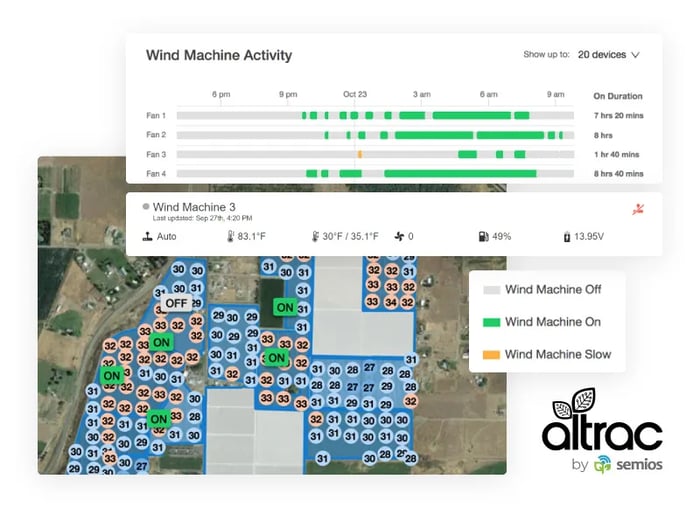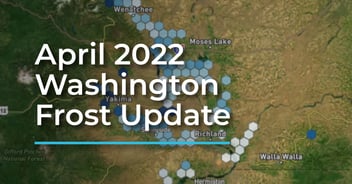In this post, we're reviewing the basics of how to protect citrus from frost highlighting new technology to help you protect your crop this winter season. You'll learn:
- How frost damages fruit
- Symptoms of citrus frost injury
- What is advective frost?
- What is radiation frost?
- What are passive protection strategies?
- What are active protection strategies?
- Understanding the Semios Altrac Wind Machine Automation Integration

Winter Is Coming...
The annual threat of freezing temperatures has returned to California’s famed citrus-growing regions. Frost exposure for as little as 30 minutes can cause significant damage leaving fruit unmarketable. This is especially true for some of the less cold-hardy varieties.
Growers rely on accurate forecasting and precise monitoring solutions to help them protect citrus from frost damage and finding the right tools can make all the difference. Semios’ network of in-canopy sensors features real-time monitoring of canopy and soil conditions and provides essential information for implementing passive and active control strategies to mitigate frost damage.
How Does Frost Damage Fruit?
Prolonged freezing temperatures can lead to ice crystals forming in the plant tissue in the space between the cells which can rupture cell walls. The ice crystals grow by drawing water out of the plant cells and leaving them dehydrated (see Figure 1).
Symptoms of citrus frost injury can include:
- Ice markings on the peel
- Internal pulp damage
Such injuries affect the appearance, flavor, and shelf-life of the fruit.
Figure 1. Ice crystals forming between plant cells.
Two Types of Frost
There are two types of frost that occur in California citrus groves:
What is Advective Frost?
Advective frost occurs when cold air blows into an area to replace warmer air. This type of frost is accompanied by:
- Strong winds
- Low humidity and
- No temperature inversion
Advective frosts are responsible for the greatest weather-related economic losses in the California citrus industry (see Table 1). There is virtually nothing a grower can do in terms of prevention and remediation. Luckily, these types of frosts are rare in California.
Table 1. Major citrus frost events in California
What is Radiation Frost?
On the other hand, radiation frost occurs frequently in California. This type of frost is characterized by:
- Clear skies
- Moderate winds, and
- Temperature inversion
Essentially, more heat is radiated away from an orchard than it receives, so the temperature drops. The temperature falls faster near the ground or orchard floor causing a temperature inversion to form – i.e., temperature increases with height above the ground.
Understanding these basic principles of energy transfer for both types of frost is paramount to developing a frost protection strategy.
What are Passive Protection Strategies?
Passive protection methods involve measures that are taken prior to a frost event to minimize the need for more expensive active control methods.
Supplemental Irrigation
Adding supplemental irrigation to increase soil moisture content is one such strategy. Soil moisture content greatly impacts the thermal conductivity and heat capacity of soils. During the day, solar radiation is absorbed into the earth’s surface and transferred back to the atmosphere at night. Heat transfer and storage improves when soil moisture is near field capacity.
Semios’ soil moisture probes feed data back to a mobile or web app and enable growers to monitor available water content in the days leading up to a forecasted frost event (see Fig. 2).
Refilling the soil profile to field capacity in the days prior to a frost event will create a buffer and prevent low lying air temperatures from dropping below damage thresholds while simultaneously monitoring soil temperature in the top foot of soil (see Fig. 3).

Figure 2. Available Water Content graph from Semios web app. Maintain soil moisture near field capacity leading up to frost.
Figure 3. Soil Temperature graph from Semios web app. Monitor soil temperature at selected top depths.
What are Active Protection Strategies?
Active control methods are energy intensive measures used to replace heat loss that occur during frost events to ensure that temperatures are maintained above damage thresholds.
Wind Machines
Wind machines are an active protection strategy that mix the warmer air above the canopy with the cooler air at the surface. In general, you need one wind machine for every 10 acres. Click to learn about Semios/Altrac wind machine automation integration.
The effectiveness of wind machines increases when a strong inversion layer is present. Inversion strength is measured as the difference in upper and lower canopy temperatures. With Semios in-canopy weather stations, growers can monitor the strength of their inversion layer to determine the best time to turn on wind machines (See Fig 4).
Figure 4. Measuring the strength of inversion layer.
Running Sprinklers During Radiant Frost
Another important active strategy involves running sprinklers during a radiant frost event. When water freezes heat energy is released. Using this concept, growers can intentionally apply water via micro sprinkler irrigation systems to keep temperatures at 32°F.
It is important that heat energy gained exceeds energy lost from evaporation. Maintaining a constant ice-liquid mixture on the ground is a good visual confirmation that you are doing things correctly. If the water freezes as soon as it makes contact with the ice-covered ground then energy lost outweighs energy gained.
Growers can measure dew point to ensure that heat energy gained will actually provide frost protection benefits. Dew point refers to the temperature at which air will become saturated and will stop being cooled by evaporation.
If there is very low humidity and sprinklers are turned on or off when the air is already very cold, evaporation of the sprinkler water can cause the air temperature to dip down even lower and cause crop damage.
That's why sprinklers must be turned on earlier, when dew points are low. Semios monitors dew point temperature at a per-acre level to help growers determine the best time to start sprinklers (See Fig. 5).
Figure 5. Semios Frost Management tools track and forecast dew point
When using sprinklers for freeze protection, the sprinklers should be started and stopped when the wet-bulb temperature is above the critical damage temperature.
Figure 6. Semios Frost Management Tools track and forecast wet bulb and leaf wetness values
Combining passive and active control strategies will provide the best results in managing frost.
Semios, combined with the new Altrac wind machine automation integration can help growers determine when and how to apply these strategies to ensure citrus crops are protected when they need it most.
The Altrac by Semios Wind Machine Automation Integration Can Help
 This integration (which includes expert installation and maintenance by Semios) combines the power of Semios' per-acre, in-canopy climate sensors with Altrac's industry-leading frost fan automation devices for automated wind machine control, saved labor, fuel, and fruit.
This integration (which includes expert installation and maintenance by Semios) combines the power of Semios' per-acre, in-canopy climate sensors with Altrac's industry-leading frost fan automation devices for automated wind machine control, saved labor, fuel, and fruit.




